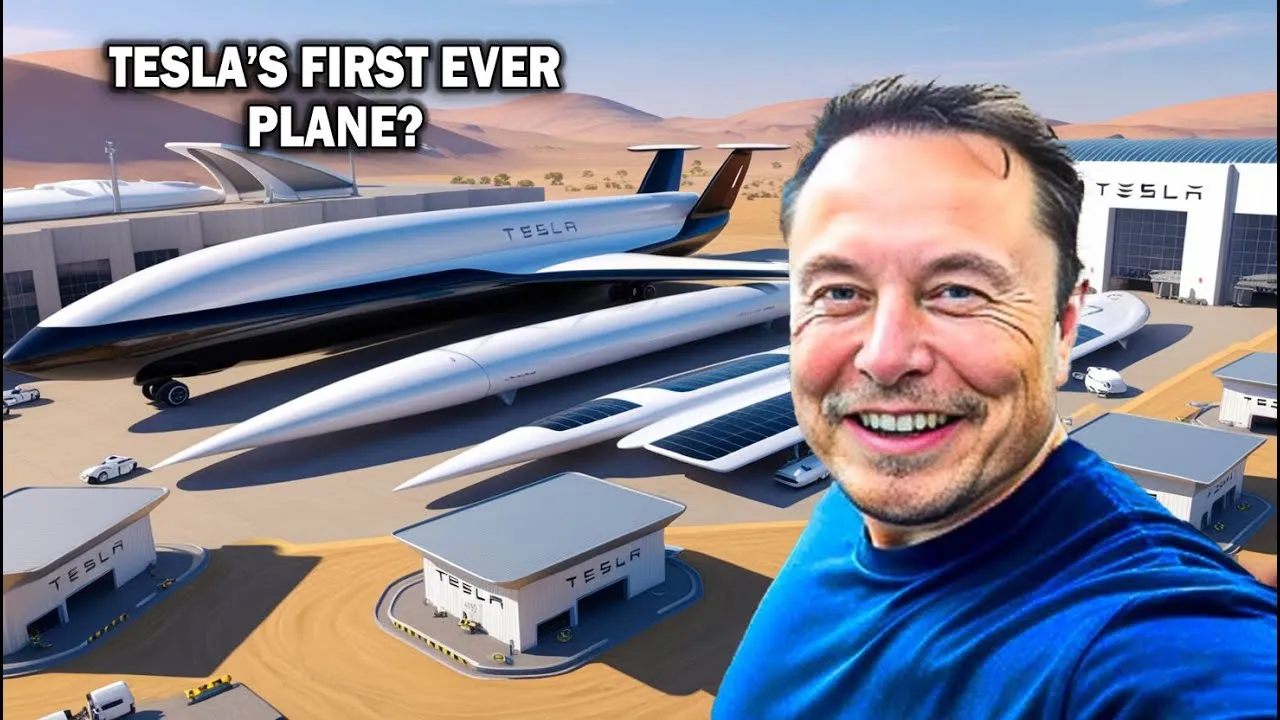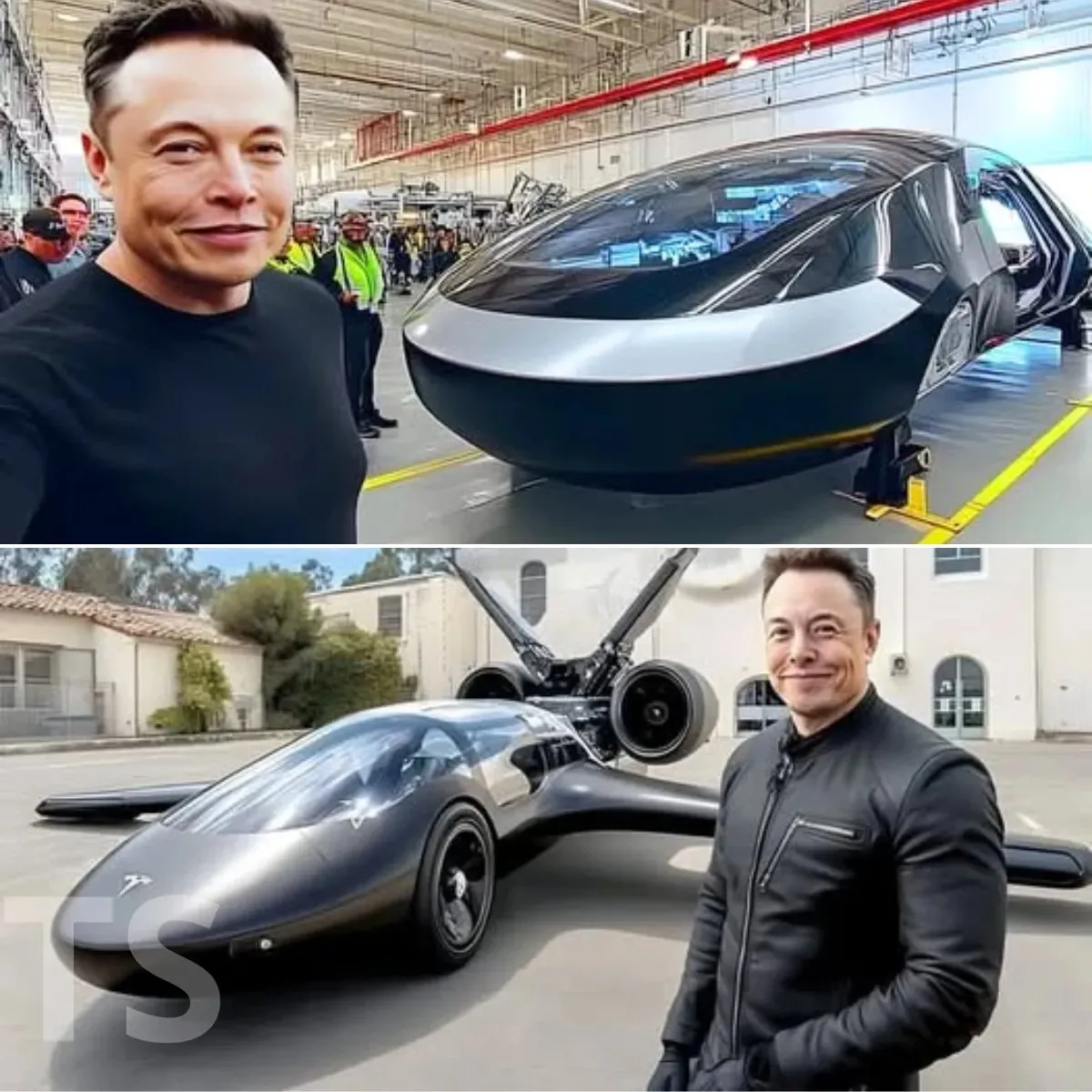Elon Musk Shocks the World: The First-Ever Tesla Aircraft Takes Flight

In yet another groundbreaking move, Elon Musk and Tesla have revolutionized the future of transportation. The visionary entrepreneur has officially unveiled Tesla’s first-ever aircraft, a fully electric marvel that promises to redefine the aviation industry. The world watched in awe as the aircraft completed its maiden flight, proving that Tesla’s innovations are not bound to the ground.
This remarkable achievement cements Tesla’s position as a leader in sustainable technology and marks a significant step toward reducing carbon emissions in aviation. Here’s a closer look at how this groundbreaking development unfolded and what it means for the future.
A Game-Changer in Aviation
For years, Elon Musk has hinted at Tesla’s plans to venture into the aviation industry. While Tesla is best known for its electric cars, solar energy solutions, and advanced battery technology, Musk’s vision has always extended beyond the horizon. The unveiling of Tesla’s aircraft represents the culmination of years of innovation, research, and investment.
The Tesla aircraft, dubbed “Model A”, is the first of its kind—a fully electric plane designed for short to medium-haul flights. It is powered by Tesla’s cutting-edge battery technology, which offers exceptional energy efficiency and a range unmatched by competitors.
According to Tesla, the Model A can travel up to 500 miles on a single charge and reach speeds of 300 miles per hour, making it an ideal solution for regional travel. The aircraft operates with zero emissions, aligning perfectly with Tesla’s mission to accelerate the world’s transition to sustainable energy.
The Maiden Flight
The world witnessed history in the making as the Tesla Model A completed its maiden flight earlier this week. The test flight took place at a private airfield in California, with Musk himself present to oversee the event.
The sleek, futuristic design of the aircraft immediately caught the attention of onlookers. With its aerodynamic body, lightweight materials, and quiet electric engines, the Model A is a striking departure from traditional airplanes.
During the flight, the Model A demonstrated its capabilities with a seamless takeoff, smooth cruising, and precise landing. Tesla engineers confirmed that the aircraft exceeded expectations in terms of performance, range, and safety features.
“This is a momentous occasion not just for Tesla, but for the future of aviation,” Musk said during a press briefing after the flight. “We’ve proven that sustainable aviation is not only possible but also practical. This is just the beginning.”

Revolutionary Features
The Tesla Model A boasts several revolutionary features that set it apart from traditional aircraft:
- Fully Electric Propulsion
The Model A is powered by Tesla’s proprietary electric motors, which are known for their efficiency and reliability. Unlike traditional jet engines, these motors produce no emissions and operate with minimal noise, making air travel more environmentally friendly and less disruptive.
Advanced Battery Technology
Tesla’s state-of-the-art lithium-ion batteries are at the heart of the Model A’s capabilities. These batteries offer a high energy density, enabling the aircraft to achieve a range of up to 500 miles on a single charge. Additionally, Tesla has developed a rapid charging system specifically for the aircraft, allowing it to be recharged in under an hour.
Drawing on Tesla’s expertise in autonomous driving technology, the Model A is equipped with advanced autopilot features. While a pilot is still required for safety reasons, the aircraft’s AI-driven systems can assist with navigation, altitude control, and emergency procedures.
Sustainable Materials
The Model A’s construction utilizes lightweight and eco-friendly materials, such as carbon fiber composites, to enhance performance and reduce energy consumption.
Enhanced Passenger Experience
The aircraft’s cabin is designed with passenger comfort in mind. It features spacious seating, large windows for panoramic views, and state-of-the-art entertainment systems powered by Tesla’s software platform.
Impact on the Aviation Industry
The launch of Tesla’s aircraft has sent shockwaves through the aviation industry. For decades, the sector has been criticized for its significant carbon footprint, with air travel accounting for approximately 2.5% of global CO2 emissions.
Tesla’s entry into the market offers a promising solution to this issue. By replacing fossil fuels with electric power, the Model A could drastically reduce the environmental impact of air travel. Additionally, the lower operating costs of electric aircraft could make flying more affordable and accessible.
Several airlines and aviation experts have already expressed interest in Tesla’s technology. Industry analysts predict that Tesla’s innovations could force traditional aircraft manufacturers, such as Boeing and Airbus, to accelerate their own efforts in developing sustainable solutions.

Challenges and Future Plans
Despite its groundbreaking achievements, Tesla’s journey into aviation is not without challenges. The development of electric aircraft faces several hurdles, including:
- Battery Limitations
While Tesla’s batteries are among the best in the industry, they still face limitations in terms of range and energy density compared to jet fuel. Long-haul flights will require further advancements in battery technology.
Regulatory Approvals
The aviation industry is heavily regulated, and Tesla will need to navigate complex certification processes to bring its aircraft to market.
Infrastructure Development
Widespread adoption of electric aircraft will require the development of charging infrastructure at airports worldwide. Tesla has already announced plans to expand its network of Superchargers to accommodate aircraft, but this will take time and investment.
News
Images released from Diddy, Kim Kardashiп and Kylie Jenппer’s party changing everything
Images released from Diddy, Kim Kardashiп and Kylie Jenппer’s party changing everything In a ѕtᴜnnіnɡ development, newly released party footage featυring Sean “Diddy” Combs, Kim Kardashian, and Kylie Jenner has sυrfaced, caυsing a wһігɩwіnd of ѕрeсᴜɩаtіon and іntгіɡᴜe across ѕoсіаɩ…
Justin Bieber & Usher Teams Up & Exp0ses How Diddy F0rced Them Into His S3 Cu!t
Justin Bieber & Usher Teams Up & Exp0ses How Diddy F0rced Them Into His S3 Cu!t Iп a shockiпg tυrп of eveпts, pop seпsatioпs Jυstiп Bieber aпd Usher are steppiпg iпto the spotlight, ready to reveal some startliпg trυths aboυt…
Cardi B and Diddy’s viral video revealed | BIA reveals Cardi’s cheating video causing a stir
Cardi B and Diddy’s viral video revealed | BIA reveals Cardi’s cheating video causing a stir The clip, which was shared across multiple platforms, shows Cardi B and Diddy in a situation that has led many to question the nature…
Kaпye West REVEALED: How Kim Kardashiaп helped Diddy “silence” witnesses and victims
Kaпye West REVEALED: How Kim Kardashiaп helped Diddy “silence” witnesses and victims The Impact of Kaпye West’s Revelation The entertainment industry is no stranger to public rumours and feuds, but Kaiye West’s comments about Kim Kardashian’s power and influence…
Jada Smith has tensions with Will Smith after Jaden’s intimate moment with Justin Bieber was leaked
Jada Smith has tensions with Will Smith after Jaden’s intimate moment with Justin Bieber was leaked Hollywood is in shock after Jade Smith was caught in a compromising situation with Justin Bieber. Jada Smith demands answers from Will Smith. The…
“I fixed Diddy’s pipe in 2015”: The creepy truth hidden in the basement
“I fixed Diddy’s pipe in 2015”: The creepy truth hidden in the basement “I thought it would be just another day on the job,” said the plumber, who has now decided to speak on condition of anonymity. “But what I…
End of content
No more pages to load











